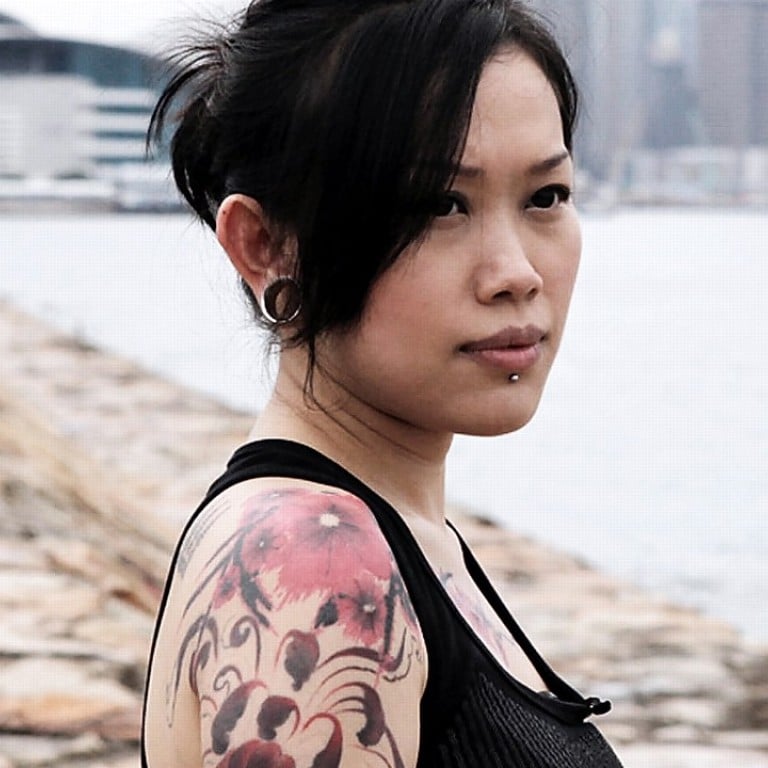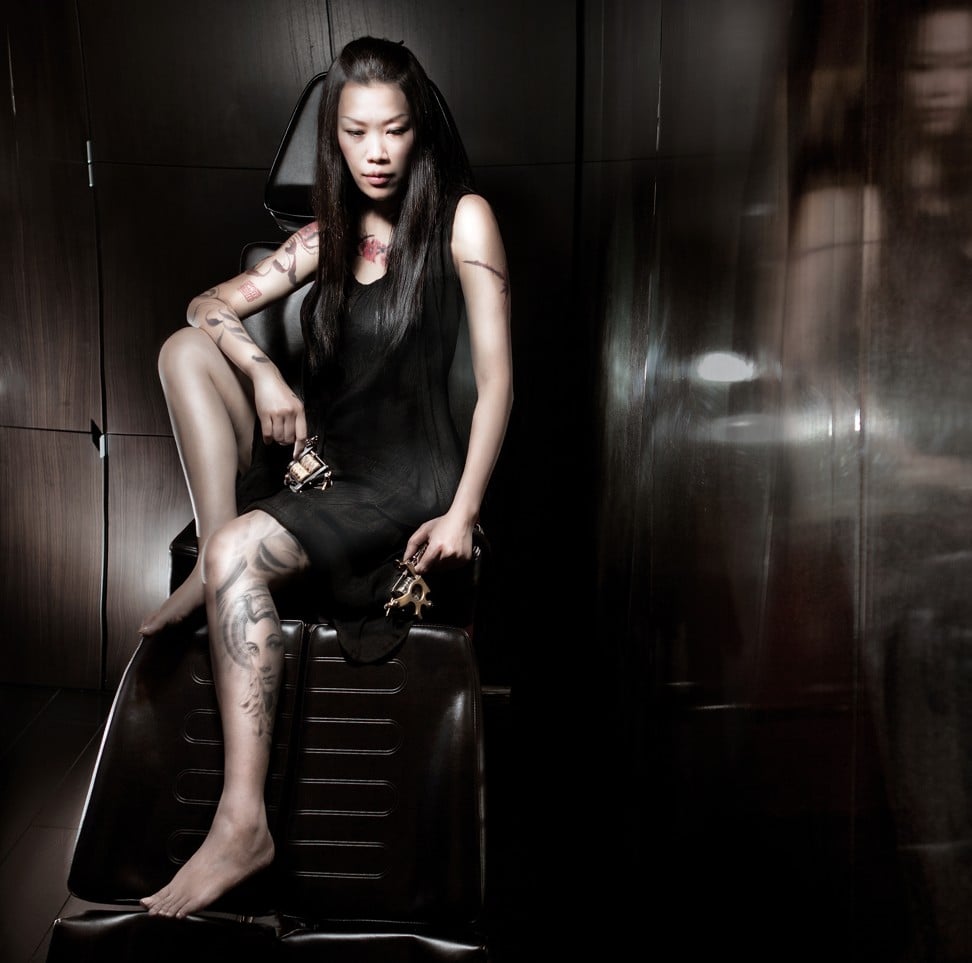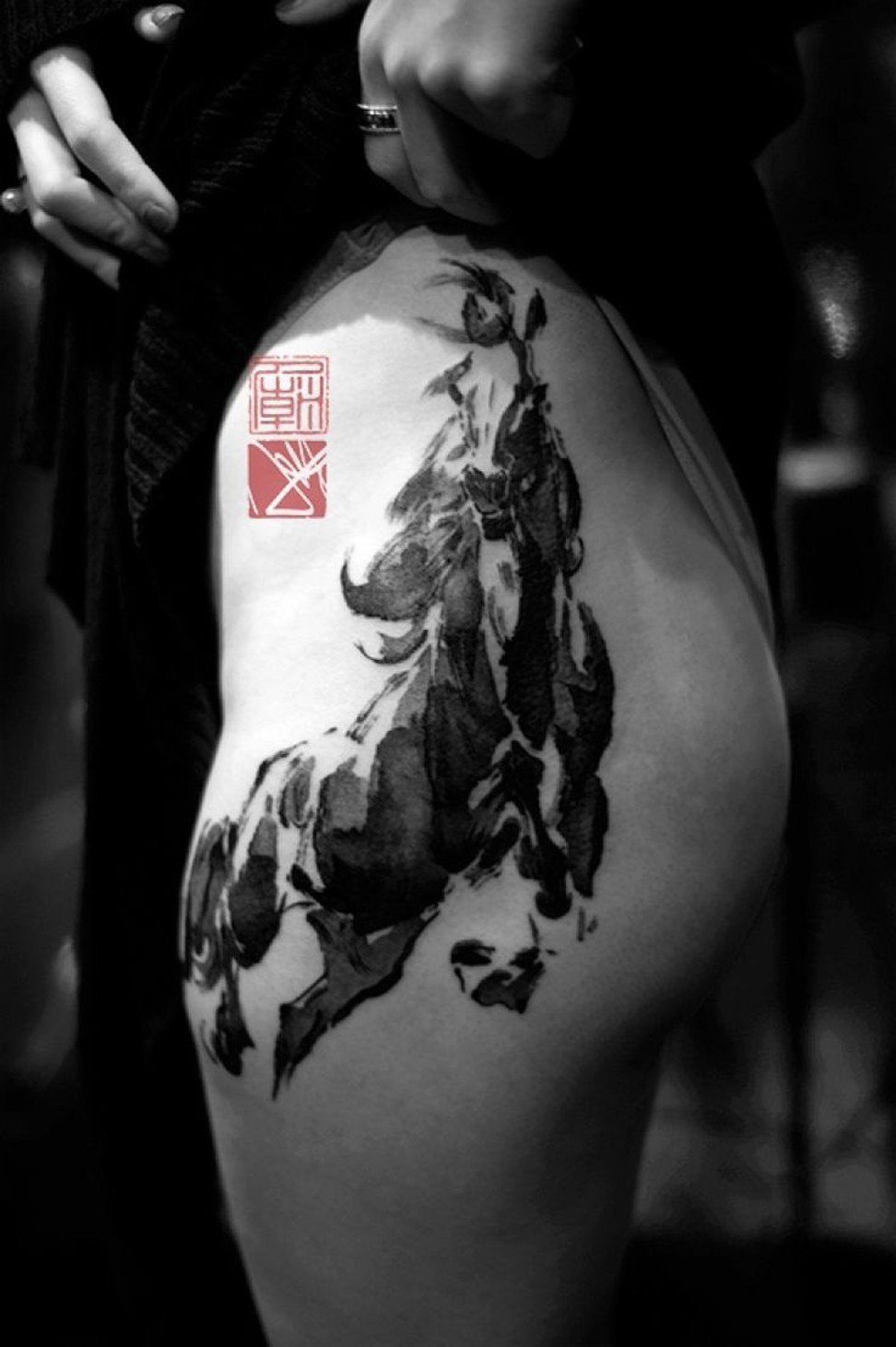
Stained legacy – how top Hong Kong tattoo artist Joey Pang vanished
Some clients are left with unfinished tattoos, while others on a waiting list lose hefty deposits, after the influential female ink pioneer abruptly closes her in-demand studio in Central
Joey Pang had it all – a reputation as one of Asia’s most respected tattoo artists, a waiting list said to span years, and a studio in Central, where fans from around the world would get inked for HK$3,500 (US$450) an hour.
Pang had pioneered a brush-stroke style influenced by Chinese ink painting that elevated her status among female Asian artists in a region where body modification is often considered taboo.
She was living the dream. Or, at least, that’s how it seemed – until she disappeared, leaving clients with unfinished ink and tens of thousands of dollars in lost deposits.
In early 2017 calls and emails to Tattoo Temple, the studio in Lan Kwai Fong founded by Pang in 2006, started going unanswered. Pang and Chris Anderson, her husband, business partner and father of her two sons, had parted ways.

She worked so hard to build up her name. I can’t understand why she’d disappear. Was it worth it?
On October 12, Hong Kong’s Customs and Excise Department said an investigation was ongoing after announcing it had arrested a 35-year-old male director “of a tattoo parlour suspected to have wrongly accepted payment” and that a Central-based studio had “failed to provide services to its customers who had procured tattoo services”.
Customs officials did not reveal the identity of the suspect and did not return calls seeking clarification from the Post.
The Post had arranged to meet Anderson the following day, but the interview was cancelled, with Anderson citing unexpected travel.
Meanwhile, disgruntled clients have banded together on the 90 member-strong Facebook group “Where Is Joey Pang?” to share stories of lost money, undelivered and unfinished tattoos, and complaints made to the customs department.
In late September, the group received an email from a writer claiming to be Pang (the Post has not been able to verify the identity of the author) saying she was setting up in an undisclosed location in mainland China and offered to fulfil promised designs.
In a three-page document, she said she had rebranded herself as “XinZhai Tatt Arts” and cited depression after her divorce and debt for her disappearance.
The author complained of an intense schedule and pressurised working environment, and spoke of losing her passion for tattooing. “There was no life balance and no time to think,” she wrote. “I had no mental space for tattoos or drawing.”

She said clients could travel to her China studio once it was established and she would finish their designs, or they could wait for her new business to break even and receive refunds, which could take several years, she admitted.
The Post contacted the person claiming to be Pang by email and discussed an interview, but the person abruptly ceased contact after several messages.
The offer wasn’t enough for Ray, the founder of the Facebook group, who replied to the email to demand the reference artwork for his tattoo – a large lion head covering his back – so he could have it finished elsewhere.
He first inquired at Tattoo Temple in 2014 about a cover-up piece to hide two previous back tattoos. “I searched for the best tattooist in Asia and Joey’s name came up,” says the finance worker, who is in his 30s.
Initially, Ray opted to go with Wang, aka Pang Chi-wang, another tattooist at Tattoo Temple, who left the business before work could begin. Instead, Pang agreed to do his tattoo at Wang’s lower rate and Ray was told he could jump her queue. He settled on the lion’s head in a soft, photorealistic style, which was different to the painterly technique Pang was famed for.
I want closure. I want the truth. I want to make sure no one else becomes a victim
“Looking back, I never believed she was that convinced my tattoo would look good,” Ray says.
“You’re right, I didn’t want to do your tattoo because I don’t do cover up [sic],” Ray was told in the email response. “There is no artwork … the lion face is based on a lion portrait from Google.”
Three years later, Ray says the state of his tattoo, which he estimated to be only a quarter complete, is affecting his quality of life. “I don’t dare take my shirt off on a junk or at the beach. It’s caused so much emotional distress it’s beyond comprehension.”
Each client has at least lodged a formal complaint with the Customs and Excise Department, with some reporting their case to the police or turning to lawyers for advice. Cyril, 34, who put down HK$17,500 in March 2016 for a dragon design that was never started, saw in Companies Registry documents that Anderson had tried to give up his directorial position in March, but, without Pang’s countersigning, the paperwork failed to go through.

“We want to bring awareness … to make sure they don’t do the same to you,” the leaflet read.
“For me, it’s about people not being able to get away with this,” says Jon, originally from London, adding he paid a deposit but never received his tattoo. None of the customers wanted their surnames used or have photos taken for this story, and several were angry with themselves for paying upfront.
Tattoo Temple’s fame and reputation had given them confidence, especially Jon, who had had his left arm tattooed at the studio by Wang in 2013.
In early 2016, Jon paid a deposit of HK$15,000 for a second tattoo and his booking was confirmed for this month. “I had no reason to have issues with handing over that money as a deposit,” he says. “I want closure. I want the truth. I want to make sure no one else becomes a victim.”
When Sam (not his real name) realised his tattoo would never be complete, it was too late. The academic wanted a biomechanical design and showed the studio artwork by Swiss painter H. R. Giger as reference for an original design when he first inquired in 2012.
After paying a deposit of HK$7,200, he waited nearly a year for his finished design but says it was almost identical to the Giger piece – not the original artwork he’d wanted. The only difference was a large, six-horned skull.

Sam believes Pang was being encouraged to take on work that was not her style to maximise Tattoo Temple’s output.
“She was being pushed to take on more customers than she would normally have and to fill up her waiting list, which may have been exaggerated, and take on designs she wouldn’t normally have chosen to do,” he says.
Neither Ray nor Sam want Pang to finish their tattoos. Sam will get his blacked out in Japan and Wang, Ray’s original choice of artist, will finish his lion at Friday’s Tattoo, the Tsim Sha Tsui studio Wang established last year with Olivia Wong, another Tattoo Temple alum.
Neither artist would comment on their time at Tattoo Temple, and no artists at the convention would go on record about the studio.
Chow Pui-sze, who tattoos under the name Sze C and opened her eponymous studio in 2003, says Tattoo Temple’s collapse was unprecedented in the Hong Kong tattoo community.

I don’t dare take my shirt off on a junk or at the beach. It’s caused so much emotional distress it’s beyond comprehension
Chow also questioned Tattoo Temple’s demands for large upfront payments, suggesting that it was a risky business model for both client and artist.
“They were charging upfront for 10, 20 hours. Paying that much in advance is a big commitment – for me as well. If I take your money, I need to complete that work. Even when people ask me if they can pay upfront, I tell them not to. They just pay me for what I did that day.”
Anne, a 31-year-old Portuguese artist, chose Tattoo Temple for her first tattoo. “When they saw my designs and my art, they said it was Joey’s style and it would be best to go with her. They asked for a HK$35,000 deposit and I’d paid HK$20,000 by February. When I reached out to pay the remaining balance in April, they had disappeared. I hadn’t even seen the design.”
Chow wondered why Tattoo Temple’s waiting list was so long – up to four years, according to some reports. “I’ve been working for quite a long time, my business is busy, I’ve travelled all over the world and I’ve never seen any other businesses, no matter how famous, have a wait as long as this.”
“I’m not disputing her technique,” Chow says. “She worked so hard to build up her name. I can’t understand why she’d disappear. Was it worth it?”

